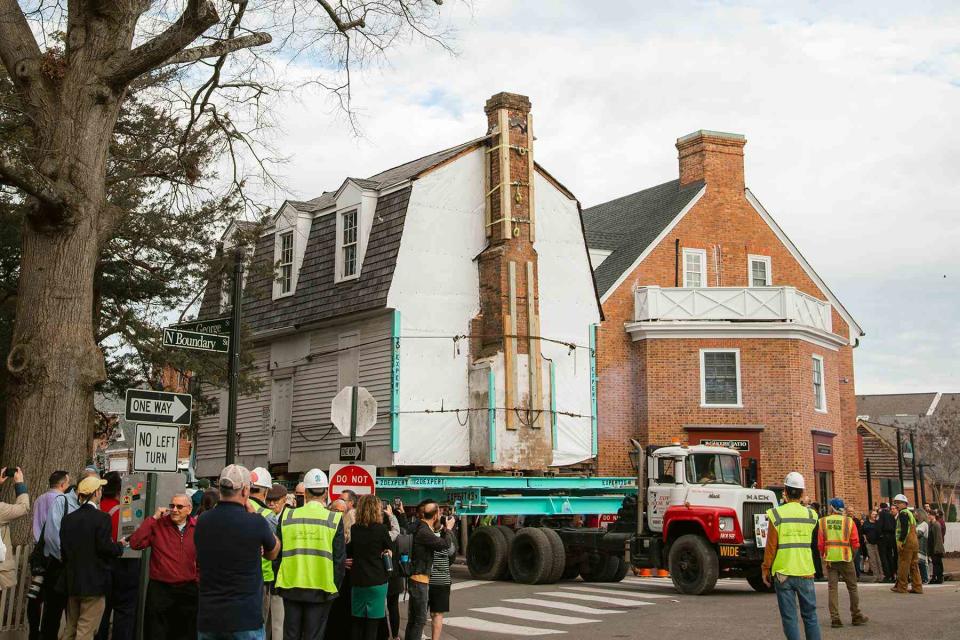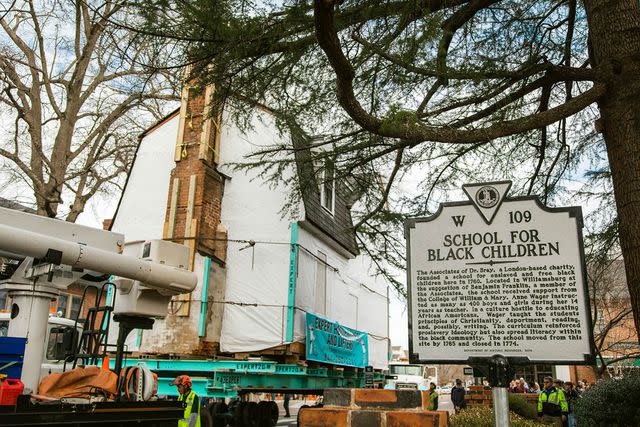How to Visit the Oldest Surviving Schoolhouse Dedicated to Teaching Black Students in the U.S.
The Bray-Digges House in Virginia has been relocated to nearby Colonial Williamsburg.

Brian Newson/Courtesy of The Colonial Williamsburg Foundation
An 18th century schoolhouse, likely the oldest surviving building dedicated to teaching Black children in the United States, has been moved from its original location in Virginia to a nearby museum.
The Bray-Digges House, which was the original home of the Williamsburg Bray School, was moved from its location on the college campus of William & Mary to Colonial Williamsburg, according to the museum. The school is expected to open to the public in September 2024, in time to commemorate the 250th anniversary of its closing.
“The Williamsburg Bray School provides us with an incredible opportunity to explore and learn from a complicated piece of our past that – like the Bray School building itself – has been overlooked by so many for hundreds of years,” Colonial Williamsburg President and CEO Cliff Fleet said in a statement. “Incorporating this building into Colonial Williamsburg’s world-class programming highlights this important piece of our collective history and allows us to share it with the world.”

Brian Newson/Courtesy of The Colonial Williamsburg Foundation
The school, which was first established in 1760 at the recommendation of Benjamin Franklin, welcomed as many as 30 students at a time, including both enslaved and free Black children, The Associated Press reported. The school, named after philanthropist Reverend Thomas Bray, employed a faith-based curriculum, which the AP said encouraged the students to accept their fate as God’s plan.
The school operated until 1774. The building then became a private home and was eventually incorporated into William & Mary’s campus.
Several students of the Bray School were enslaved at the Randolph House, which is also currently part of Colonial Williamsburg. For Janice Canaday, the Randolph House site supervisor and a member of the Williamsburg Bray School descendant community, the history of the school provides a “window into their lives beyond slavery.”
“When most people think of African Americans in 18th-century America, they usually think of slavery,” Canaday said in the statement. “But the institution of slavery was something that was forced on my ancestors. It doesn’t say anything about who they were and what they valued… It’s a window into their hearts and minds. It’s an opportunity to connect to their strength of resistance, resilience, endurance and their humanity.”
For more Travel & Leisure news, make sure to sign up for our newsletter!
Read the original article on Travel & Leisure.

